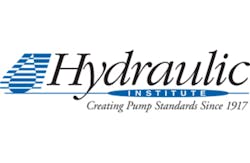Hydraulic Institute Publishes ANSI/HI 9.6.1–2012 Rotodynamic Pumps Guideline For NPSH Margin
This guideline covers rotodynamic, general purpose pumps with power levels as high as 5300 hp and impeller tip speeds less than 130 feet per second and describes the benefits to pump longevity of maintaining suitable NPSH Margin. HI cautions pump users that the full-published pump head will not be achieved when the NPSH Available equals the NPSH3 of the pump. If the NPSH Available matches the NPSH3, the first-stage head will be 3 percent less than the fully developed value. Today’s higher speed, higher energy density pumps might not achieve acceptable service life under suction conditions without an adequate NPSH Margin.
HI says this document serves as a tutorial on the subject of NPSH and provides guidance for determining NPSH Margin. The following considerations are discussed relative to the sensitivity of a pump to NPSH-related problems:
- Impeller inlet tip speed
- Larger vs. smaller impeller eye diameter
- Suction specific speed
- Characteristics of the pumpage
- Operating range of the pump and proximity to POR and AOR
- Materials of construction and cavitation resistance
- Impeller vane overlap
- Pump size and relationship of size to cavitation damage
- Duty cycle—time of operation under cavitating condition
- Reduction of NPSHa with time
HI says this NPSH reference is intended to help pump users understand why it is essential to specify an appropriate NSPH Margin and learn about the negative aspects of specifying an excessive NPSH Margin.
The updated guideline is available for purchase at the HI eStore.



